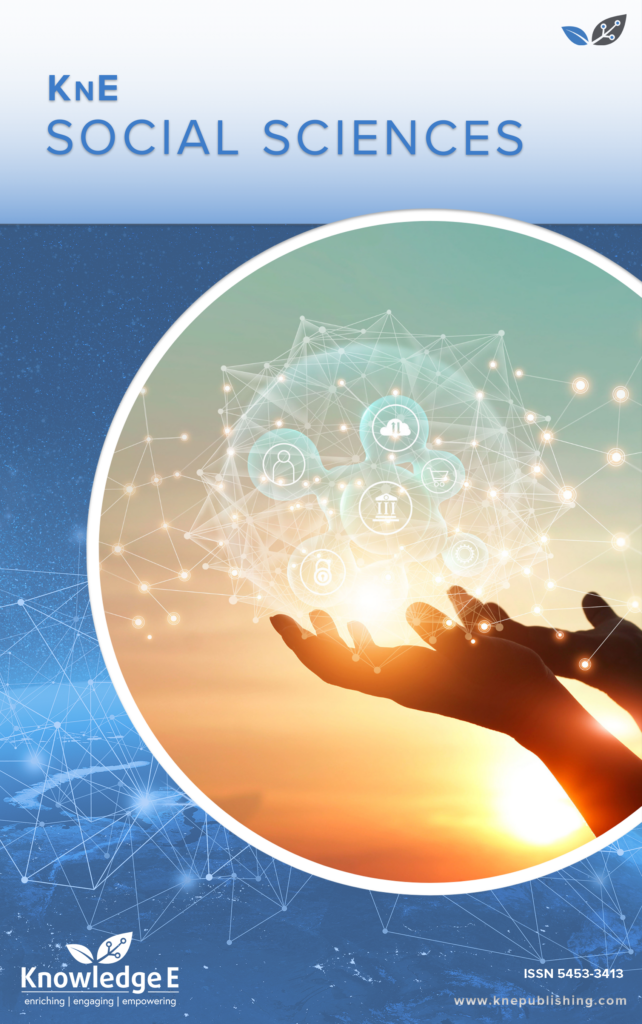
KnE Social Sciences
ISSN: 2518-668X
The latest conference proceedings on humanities, arts and social sciences.
Analyzing the Expression of Complementing in Harry Potter the Movie By Using Grice’s Cooperative Principles: A Contextual Supplementary Material
Published date:Mar 17 2019
Journal Title: KnE Social Sciences
Issue title: International Seminar on Language, Education, and Culture (ISoLEC)
Pages:240–254
Authors:
Abstract:
In Indonesia, English is a foreign language which means that the language is only used for academic purposes. As the result, the students lack of English exposure outside the classroom and teacher becomes the only model of learning English. In addition, the material that the teachers use mainly textbook which the content is limited and not contextual. To overcome the problem, teachers use authentic materials to bridge the gap between the real language use and the prescriptive ones. Authentic materials have some advantages such as providing various contextual and natural expressions but at the same time carries non academic language that is hard to understand. It is the teachers’s job with his/her discourse competence to decipher the message for the students and uses it as the models of language expression. It is important to find different kinds of natural language models for the students in order to help them use the language naturally and appropriately. Therefore, this paper will analyze compliment and compliment response expressions in Harry Potter the movie by using Grice’s Cooperative principle in order to find more examples of these expressions and to provide alternative materials in speaking class.
Keywords: implicature, authentic materials, compliments and compliment responses, pedagogical implication
References:
[1] Canale, M. & Swain, M. (1979). Theoretical Bases of Communicative Approaches to Second Language Teaching and Testing,” Applied Linguistics, vol. 1, no. 1, pp. 1-39,
[2] Chung, H & Chen, S. (2010). A Study on The Effect Of Status on Compliment Response Strategies By Taiwanese EFL Young Learners And Its Pedagogical Implications. National Taipe University of Education
[3] Crystal, D. (2003a). English as a Global Language, (2nd Ed.). Cambridge: Cambridge University Press.
[4] Grice, H. P. (1975). Logic and Conversation. In Speech Acts [Syntax and Semantics 3], Peter Cole and Jerry Morgan (eds), 41-58. New York: Academic Press.
[5] Guariento, W. & Morley, J. (2001).Text and task authenticity in the EFL classroom. ELT Journal 55(4), 347-353
[6] Herbert, R. K. (1989). The structure of English compliment and compliment responses: A contrastive sketch. In W. Olesky (eds.), contrastive pragmatics. Amesterdam: John Benjamins. 3.35
[7] Holmes, J. (1986). Compliments and compliment responses in New Zealand English. AnthropologicalLinguistics
[8] Holmes, J. and Brown P. (1987). Teachers and students learning about compliments. TESOL Quarterly, 523–546. http://dx.doi.org/10.2307/3586501
[9] Holmes, J. (1992). An Introduction to Sociolinguistics. London: Longman
[10] Martinez, A. (2002). Authentic materials: An overview. Karen’s Linguistic Issues.Retrieved on July 20, 2018 from http://www3.telus.net/linguisticsissues/ authenticmaterials.html
[11] Richard, J.C. (2001). Curriculum development in language teaching. Cambridge: Cambridge University Press.
[12] Romana, T. (1999). The place of ‘culture’ in the Foreign Language Classroom: A Reflection.
[13] Wolfson, N. (1983). An empirically based analysis of complimenting in American English. In N. Wolson & E.Judd (Eds.,) Sociolinguistics and language acquisition (pp. 90). Rowley, Mass: Newbury House.